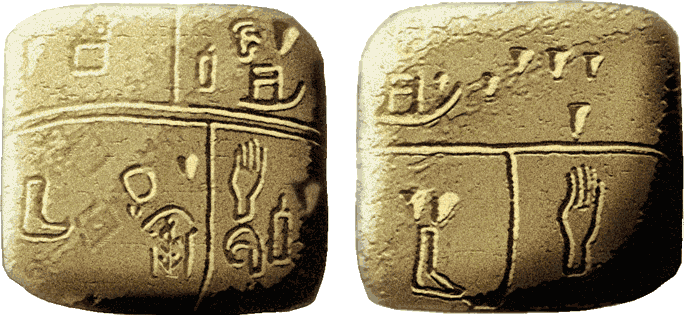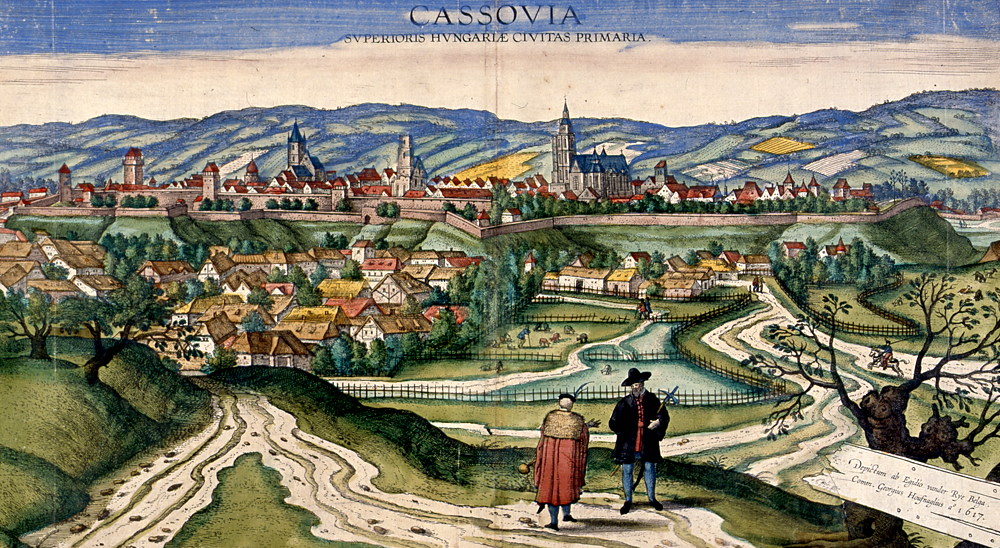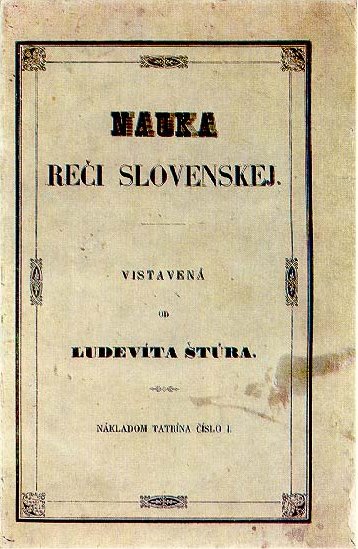|
Czechoslovak Language
The Czechoslovak language ( or , ) was a political sociolinguistic concept used in Czechoslovakia in 1920ã1938 for the definition of the state language of the country which proclaimed its independence as the republic of two nations, i.e. ethnic groups, Czechs and Slovaks. The Czech and Slovak languages are two closely related mutually intelligible West Slavic languages; they form their own sub-branch, called the CzechãSlovak languages. In practice, in the international discourse and documents, the role of "Czechoslovak" was played by Czech. However, in local speech in public discourse, and media, it was generally a form of Czech as spoken in the capital Prague (i.e. either Standard Czech formally or Common Czech informally) with limited introduction of some Slovak vocabulary. Meanwhile, the Constitution of 1920 and its derivative acts allowed the usage of minority languages provided that they were spoken by not less than 20% of the local population of certain areas. O ... [...More Info...] [...Related Items...] OR: [Wikipedia] [Google] [Baidu] |
Czechoslovakia
Czechoslovakia ( ; Czech language, Czech and , ''áesko-Slovensko'') was a landlocked country in Central Europe, created in 1918, when it declared its independence from Austria-Hungary. In 1938, after the Munich Agreement, the Sudetenland became part of Nazi Germany, while the country lost further territories to First Vienna Award, Hungary and Trans-Olza, Poland (the territories of southern Slovakia with a predominantly Hungarian population to Hungary and Zaolzie with a predominantly Polish population to Poland). Between 1939 and 1945, the state ceased to exist, as Slovak state, Slovakia proclaimed its independence and Carpathian Ruthenia became part of Kingdom of Hungary (1920ã1946), Hungary, while the German Protectorate of Bohemia and Moravia was proclaimed in the remainder of the Czech Lands. In 1939, after the outbreak of World War II, former Czechoslovak President Edvard BeneéÀ formed Czechoslovak government-in-exile, a government-in-exile and sought recognition from the ... [...More Info...] [...Related Items...] OR: [Wikipedia] [Google] [Baidu] |
History Of Bratislava
Bratislava (, ), currently the capital of Slovakia and the country's largest city, has existed for about a thousand years. Because of the city's strategic geographical location, it was an important European hub due to its proximity to the advanced cultures of the Mediterranean and the Orient as well as its link to the rest of Europe, which were possible by the Danube, Danube River. Prehistory In the area where present-day Bratislava lies, three skeletons of the ''(Epi)Pliopithecus vindobonensis'' were found in the borough DevûÙnska NovûÀ Ves in 1957, dating to 25ã15 million years ago. Teeth of the ''Griphopithecus suessi'' (formerly known as ''Sivapithecus darwiny'' or ''Dryopithecus darwiny''), dating 14ã10 million years ago, were also found in DevûÙnska NovûÀ Ves, this time in 1902. From the Paleolithic period, hand-axes and other stone tools of ''Homo heidelbergensis'' (from the periods about 0.45 million years and about 0.3 million years ago) and of Neanderthal man were fo ... [...More Info...] [...Related Items...] OR: [Wikipedia] [Google] [Baidu] |
Organic Law
An organic law is a law, or system of laws, that form the foundation of a government, corporation or any other organization's body of rules. A constitution is a particular form of organic law. By country France Under Article 46 of the Constitution of France, organic laws (in French, ''lois organiques''; in English sometimes translated as Institutional Acts) are a short, fixed list of statutes (in 2005, there were about 30 of them) specified in the Constitution. They overrule ordinary statutes. They must be properly enacted by the Parliament of France following a special procedure and must be approved for constitutionality by the Constitutional Council of France before they can be promulgated. Organic laws allow flexibility if needed. An important category of organic laws includes the budgets of the French state and French social security. Other organic laws give the practical procedures for various elections. Organic laws reduce the need for amendments to the constitution. Ho ... [...More Info...] [...Related Items...] OR: [Wikipedia] [Google] [Baidu] |
Czechoslovak Constitution Of 1920
The Czechoslovak Constitution of 1920 was the second constitution of Czechoslovakia. Ratified after World War I, the constitution established Czechoslovakia as a democratic republic. It was adopted by the National Assembly on 29 February 1920 and replaced the provisional constitution adopted on 13 November 1918. The constitution, modelled after constitutions of established democracies, was conceived in the light of Hans Kelsen's contribution to constitutional law. The system of government the constitution introduced made Czechoslovakia the most westernized of all of the central and eastern European nations on the verge of World War II. The constitution created a parliament but also a president and cabinet, sharing powers of executive branch. Beneath them was a judiciary that was advanced with many levels of courts delegated for various types of cases. Parliamentary democracy The parliament, the National Assembly, was bicameral. The Chamber of Deputies consisted of 300 members ... [...More Info...] [...Related Items...] OR: [Wikipedia] [Google] [Baidu] |
First Czechoslovak Republic
The First Czechoslovak Republic, often colloquially referred to as the First Republic, was the first Czechoslovakia, Czechoslovak state that existed from 1918 to 1938, a union of ethnic Czechs and Slovaks. The country was commonly called Czechoslovakia a compound of ''Czech'' and ''Slovak''; which gradually became the most widely used name for its successor states. It was composed of former territories of Austria-Hungary, inheriting different systems of administration from the formerly Cisleithania, Austrian (Bohemia, Moravia, a small part of Silesia) and Kingdom of Hungary, Hungarian territories (mostly Upper Hungary and Carpathian Ruthenia). After 1933, Czechoslovakia remained the only ''de facto'' functioning democracy in Central Europe, organized as a parliamentary republic. Under pressure from Germans in Czechoslovakia, its Sudeten German minority, supported by neighbouring Nazi Germany, Czechoslovakia was forced to cede its Sudetenland region to Germany on 1 October 1938 as ... [...More Info...] [...Related Items...] OR: [Wikipedia] [Google] [Baidu] |
Moravian Language
Moravian dialects () are the varieties of Czech spoken in Moravia, a historical region in the east of the Czech Republic. There are more forms of the Czech language used in Moravia than in the rest of the Czech Republic. The main four groups of dialects are the Bohemian-Moravian group, the Central Moravian group, the Eastern Moravian group and the Lach (Silesian) group (which is also spoken in Czech Silesia). While the forms are generally viewed as regional variants of Czech, some Moravians (108,469 in the 2011 census) claim them to be one separate Moravian language. Moravian dialects are considerably more varied than the dialects of Bohemia, and span a dialect continuum linking Bohemian and West Slovak dialects. A popular misconception holds that eastern Moravian dialects are closer to Slovak than Czech, but this is incorrect; in fact, the opposite is true, and certain dialects in far western Slovakia exhibit features more akin to standard Czech than to standard Slovak. Until ... [...More Info...] [...Related Items...] OR: [Wikipedia] [Google] [Baidu] |
Slovak Language
Slovak ( ; endonym: or ), is a West Slavic language of the Czech-Slovak languages, CzechãSlovak group, written in Latin script and formerly in Cyrillic script. It is part of the Indo-European languages, Indo-European language family, and is one of the Slavic languages, which are part of the larger Balto-Slavic languages, Balto-Slavic branch. Spoken by approximately 5 million people as a native language, primarily ethnic Slovaks, it serves as the official language of Slovakia and one of the 24 official languages of the European Union. Slovak is closely related to Czech language, Czech, to the point of very high mutual intelligibility, as well as to Polish language, Polish. Like other Slavic languages, Slovak is a fusional language with a complex system of morphology (linguistics), morphology and relatively flexible word order. Its vocabulary has been extensively influenced by Latin and German language, German, as well as other Slavic languages. History The CzechãSlovak gr ... [...More Info...] [...Related Items...] OR: [Wikipedia] [Google] [Baidu] |
Literary Standard
Literature is any collection of written work, but it is also used more narrowly for writings specifically considered to be an art form, especially novels, plays, and poems. It includes both print and digital writing. In recent centuries, the definition has expanded to include oral literature, much of which has been transcribed.; see also Homer. Literature is a method of recording, preserving, and transmitting knowledge and entertainment. It can also have a social, psychological, spiritual, or political role. Literary criticism is one of the oldest academic disciplines, and is concerned with the literary merit or intellectual significance of specific texts. The study of books and other texts as artifacts or traditions is instead encompassed by textual criticism or the history of the book. "Literature", as an art form, is sometimes used synonymously with literary fiction, fiction written with the goal of artistic merit, but can also include works in various non-fiction genres ... [...More Info...] [...Related Items...] OR: [Wikipedia] [Google] [Baidu] |
Upper Hungary
Upper Hungary (, "Upland"), is the area that was historically the northern part of the Kingdom of Hungary, now mostly present-day Slovakia. The region has also been called ''Felsé-MagyarorszûÀg'' ( literally: "Upper Hungary"; ). During the HabsburgãOttoman wars, Upper Hungary meant only the northeastern parts of the Hungarian Kingdom. The northwestern regions (present-day western and central Slovakia) belonged to ''Lower Hungary''. Sometime during the 18th or 19th century, Upper Hungary began to imply the whole northern regions of the kingdom. The population of Upper Hungary was mixed and mainly consisted of Slovaks, Hungarians, Germans, Ashkenazi Jews and Ruthenians. The first complex demographic data are from the 18th century, in which Slovaks constituted the majority population in Upper Hungary. Slovaks called this territory "''Slovensko''" (Slovakia), which term appears in written documents from the 15th century, but it was not precisely defined and the region inhabite ... [...More Info...] [...Related Items...] OR: [Wikipedia] [Google] [Baidu] |
FrantiéÀek Palackû§
FrantiéÀek Palackû§ (; 14 June 1798 ã 26 May 1876) was a Czech historian and politician. He was the most influential person of the Czech National Revival, called "Father of the Nation". Life FrantiéÀek Palackû§ was born on 14 June 1798, at Hodslavice house 108, a northeastern Moravian village now part of the Moravian-Silesian Region of the Czech Republic. His ancestors had been members of the community of the Bohemian Brethren, and had clandestinely maintained their Protestant belief throughout the period of religious persecution, eventually giving their adherence to the Augsburg confession as approximate to their original faith. Palackû§'s father was a schoolmaster and a man of some learning. The son was sent in 1812 to the Evangelic Lutheran Lyceum at the then- Hungarian city of Bratislava, where he came in contact with the philologist Pavel J. é afaéûÙk and became a zealous student of Slavic languages (he mastered 11 languages and became familiar with a few others). ... [...More Info...] [...Related Items...] OR: [Wikipedia] [Google] [Baidu] |
á§udovûÙt é tû¤r
á§udovûÙt é tû¤r (; 28 October 1815 ã 12 January 1856), also known as á§udovûÙt Velislav é tû¤r, was a Slovak revolutionary, politician, and writer. As a leader of the Slovak nationalism, Slovak national revival in the 19th century and the codifier of Standard language, standard Slovak language, Slovak, he is lauded as one of the most important figures in Slovak history. é tû¤r was an Community organizing, organizer of the Slovaks, Slovak volunteer Political campaign, campaigns during the Hungarian Revolution of 1848. He was also a politician, Slovak poetry, poet, journalist, publisher, teacher, philosopher, linguist, and member of the Hungarian Parliament. Biography Early life á§udovûÙt é tû¤r was born on 28 October 1815 in Uhrovec, Zayugrû°c, in the Austrian Empire (in the same house where Alexander Dubáek was later born) as the second child of Samuel and Anna é tû¤r. He was baptized in the Evangelical Lutheran church in Uhrovec. He acquired his basic education, inc ... [...More Info...] [...Related Items...] OR: [Wikipedia] [Google] [Baidu] |





